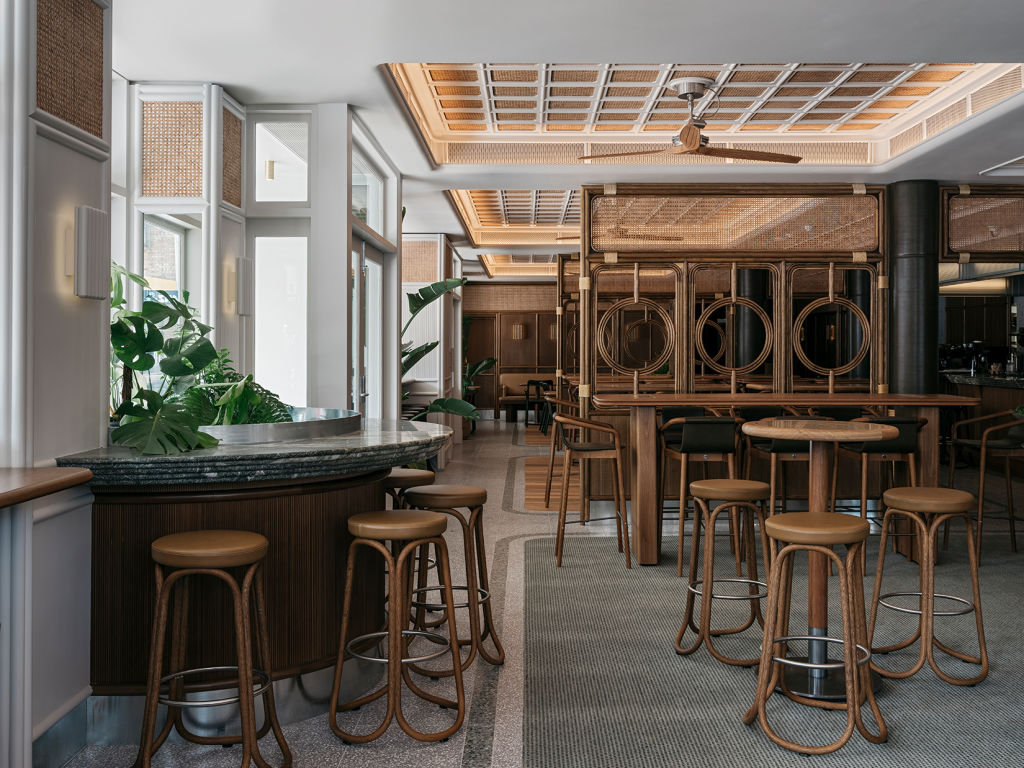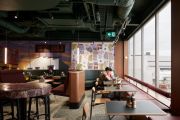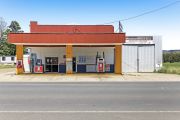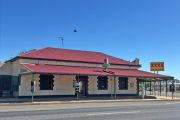
Shortlisted entries in this year's Belle Coco Republic Interior Design Awards feature lots of natural stone and colour
Gyms and yoga studios that offer as much aesthetic therapy as they do physical; restaurants and hotels so thematically immersive you might be in another country, and commercial spaces so comfortably appointed that by moving in a futon you could take up residence.
These are some among the many spaces being showcased in the shortlist of this year’s 9th annual Belle Coco Republic Interior Design Awards.
The quality and quantity of entries – a record 300 for 2019 – evidence that although there are now dozens of architectural and interior design awards competing for attention, the leading-edge Australian designers put huge energy into their submissions because, as one of the sponsors of this forum suggests, awards with reputable cachet give them “a runway” on which to strut the projects they’ve been able to execute “without compromise”.
This is how the best interior designers really want to express themselves without perhaps being tempered by the usually tamer tastes of paying clients.
Anthony Spon-Smith, creative and buying director of the ever-expanding and multi-platform Coco Republic furnishing and interiors business – which last week commenced wholesaling into the US market – compares the big awards to headline international fashion shows because “it’s where the creatives get to show their most exciting product”.
And like fashion shows, it’s where punters and potential clients get to see who and what is hot.
Although the Belle Coco Republic awards don’t have cash prizes, winners do receive trips to the influential European design shows and vouchers that can be converted into Coco Republic product.
Spon-Smith, a designer himself, and a buyer who is constantly travelling the world, is one of the nine expert judges and having cast his eye over the 40 finalists in the eight categories, notes particularly the return of colour to both home and commercial interiors; that there is no let-up in Australia’s love affair with a residential lifestyle that puts as much emphasis into setting up outdoor spaces, and “stone, stone and more stone”.
“It sounds boring but almost every property incorporates a lot of stone”, he tells.
What’s being banished is the man-made or reconstituted stone in favour of “timeless, hardwearing real stone” which, he points out, is becoming a finite resource and therefore, like natural timbers, “more luxurious”.
Focusing in on two of the interior categories, commercial and hospitality, reveals some interesting movements such as the two wellness spaces among the five in the commercial shortlist that reflect such a substantial expenditure they demonstrate how economically important the designer sweat industry has become.
One, Shelter, a new gym in Double Bay – with some weekly memberships costing $100 to $200 – offers spin classes, saunas, stone trough ice-baths, a vegan smoothie bar and seemingly supermodel training staff.
Designed by Esoteriko, in “a restrained minimal palette”, Anthony Spon-Smith believes the converted warehouse reflects “the soft, warm interiors that are inviting”, and that should elicit a greater patronage of women “who have been locked out of the gym experience for many years”.
The other is Warrior One, the second in a chain of Melbourne yoga studios that demonstrates how big holistic luxe has become. In the US alone yoga has increased its clientele by 50 per cent in four years and now accounts for a $US16 billion annual spend.
Done by Golden in whites and with a statement hand-sculpted limestone bench in the foyer, the bayside studio has been appointed to evoke “transcendent experiences”. Again, says Spon-Smith, it shows “a beautiful, sophisticated softness”.
On the opposite tack are the hospitality finalists such as Amber Road’s amazing and almost wholly charcoal dark eatery Edition Roasters, a “Japanese/Nordic” themed eatery in Sydney’s Haymarket that is so transportive it could be exactly what it purports to be: a Japanese farmhouse.
Another gorgeous Asian-themed hospitality space that could be a place Somerset Maugham might have dined in is the lovely Richards Stanisich reinterpretation of Hotel Rose Bay.
Finely detailed with a deco feel in finishes of terrazzo, ceramic tiling, leather, timber and rattan, the 1929 hotel is performing just as Spon-Smith says hospitality spaces now need to: “As very distinct and experiential spaces that are exciting and that do something really different”.
To get punters away from the convenience of Uber Eats and out into a public space, he says hospitality venues “need to spend more so they are not generic”.
The other big trend the jurist detects in this year’s listing is the return of colour after years of white-on-white interiors. And very earthy colours they are: “Blush, reds and crimsons. We are seeing a much greater use of colour than there has been for a long time and”, he predicts, “we will see a lot more of it in the future”.
The Belle Coco Republic Interior Design Awards will be announced in Sydney on May 21.














